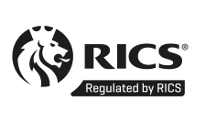Our Client occupied an office building in Central London on a short lease. Their demise included 2 floors of a multi-occupied office building and each floor was subject to a separate lease. Our Client contacted us on the day of their lease expiry, advising that they were vacating their demised space and needed advice on their dilapidations’ liability.
Our Client confirmed that whilst their Landlord was aware they were vacating their offices, he had not prepared a Schedule of Dilapidations. Our Client therefore wanted us to advise them on their potential lease obligations and the cost of those obligations.
We received instructions to complete a review of the leases and undertake a site inspection and report on their potential dilapidation liabilities.
We were able to undertake an inspection within days of instruction to review the nature and condition of each floor. We took detailed notes including a photographic record of the demised areas. We reviewed the details taken on site, and in conjunction with an assessment of their lease obligations, provided our Client with outline dilapidations’ advice.
This advice set out the potential claim that could be made against them in accordance with their lease terms. Although the two leases expired simultaneously and were similar, we had to carefully review each lease to ensure we accurately identified our Client’s lease liabilities for each floor. Our site findings were then retained in anticipation of a formal claim in the form of a Terminal Schedule of Dilapidations being served on our Client.
We always recommend that tenants seek advice on their dilapidation liabilities, ideally in good time of the expiry of their lease. It is important that tenants understand the dilapidations implications of their lease and the financial impact it may have on them.
Tim Greenwood and Associates are well placed to offer dilapidations advice to Landlords and Tenants. We provide advice on lease liabilities and offer guidance to both Landlords and Tenants through the dilapidations process.
